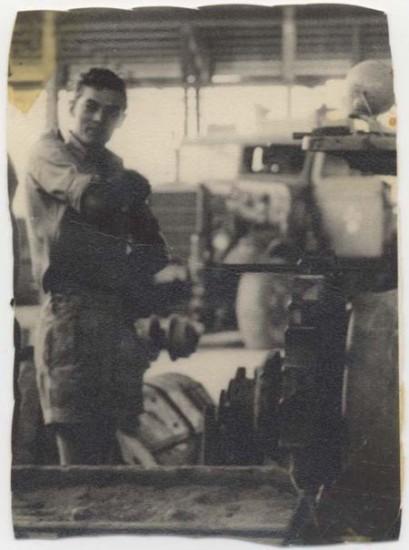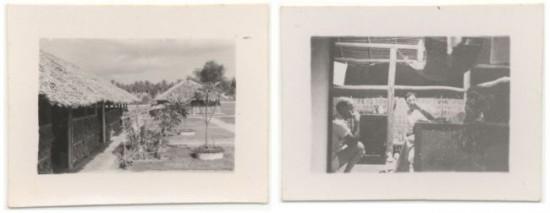Rock n’ Roll and the first Radio RAAF Butterworth, Malaysia
“’Rock Around the Clock’ took the place by storm,” recalls Doug Lewin. “People in Butterworth and Penang loved it.”
This was 1956 and the global hit by “Bill Haley and the Comets” was broadcast through a small radio station set up by the men of RAAF No. 2 Construction Squadron at Butterworth in Malaysia. The squadron was there to construct an airfield strip in Butterworth for the British during the Malayan Emergency. They were housed in a camp of Attap huts next to the construction site, and rock was sourced from a quarry about 5 miles away.


Corporal Doug Lewin was working as an engineer with the Squadron. At the time the American Forces Radio network was broadcasting contemporary music from Guam, but this was restricted to short wave radio and not everyone had this. The idea to broadcast music for the unit came about through a discussion on recreational pursuits to break up the regime of work and sleep.
“We were in the canteen one night and we agreed that background music would be a good idea. As there were 14 sleeping huts each with 6 rooms, we were faced with a potential situation of many different types of music competing from the different huts. After careful consideration and several more beers it was agreed that the Tannoy system would be the best way to provide background music for the Unit.”
The Tannoy system was an internal loudspeaker system working throughout the RAF and RAAF bases at Butterworth, controlled by the British security radio network. When the men linked their turntables and amplifiers into the system, they had no idea they were broadcasting to the whole network. British security tracked down the music and demanded that they cease, but by then the 24 hour music had become a hit.
“Our music broadcasting had become so popular that even the locals came to the security fence to listen. When the music ceased, loud were the complaints from both within and outside the Base and surrounds. Such was the discontent that it was decided to build a low powered radio station and continue with the 24 hour music. This was done and Radio RAAF Butterworth (RRB) was born.”
Anyone not on a work shift could help with the broadcasting. Jazz was also popular. A range of music was played although a classical programme did not last long. The first records were those donated by the unit personnel.
“Our records came from Australia. We asked the local Penang record store, and they made enquiries through Singapore for us. The latest music from America started coming into Penang and it wasn’t just the Australians buying it. The locals bought the music as well.”
As the work of the squadron continued, RRB acquired a new listener. This was a tiger that wandered into the unit’s quarry site one night and disrupted proceedings. Although his visit was short, the broadcast music obviously proved irresistible and his footprints were occasionally detected in the nearby dust.
Although the latest music was becoming popular with the locals, their community leaders still considered it “decadent western stuff”, and the Australian authorities didn’t want to offend them given the fragile political situation. RRB functioned unofficially. And this probably explains why most histories give a date of around 1960 for the first broadcasts of the station. By then Independence had been declared and the Malaysian government was forming a new relationship with the Australian government. The other reason could be that people have just forgotten this early RRB history.
Back in 1958, No. 2 Construction Squadron completed the airstrip 2 years ahead of time and well under budget to the amazement of the British government. With their work finished, the unit returned to Australia, and Lewin remembers the smooth sounds of Sinatra then filling the RRB airwaves.
Those old 33 1/3 records bought in Penang are now stored on a farm in the Lismore area together with tractor equipment.
We would like to thank Doug for sharing this history with us. If you have any memories of RAAF Radio Butterworth in the 1950s we would like to hear from you.